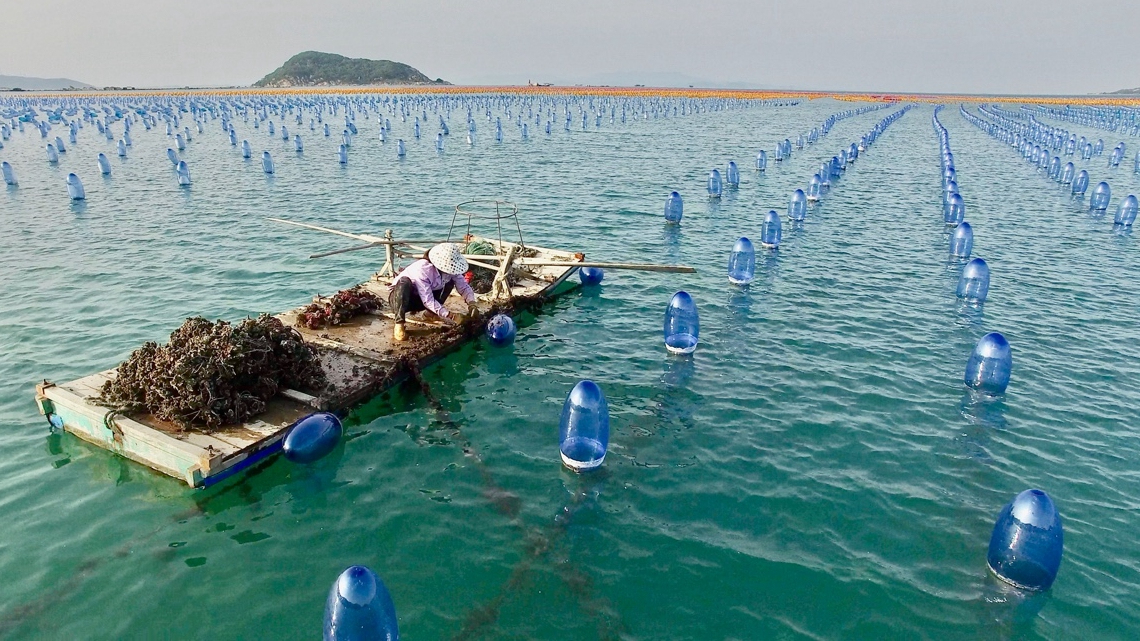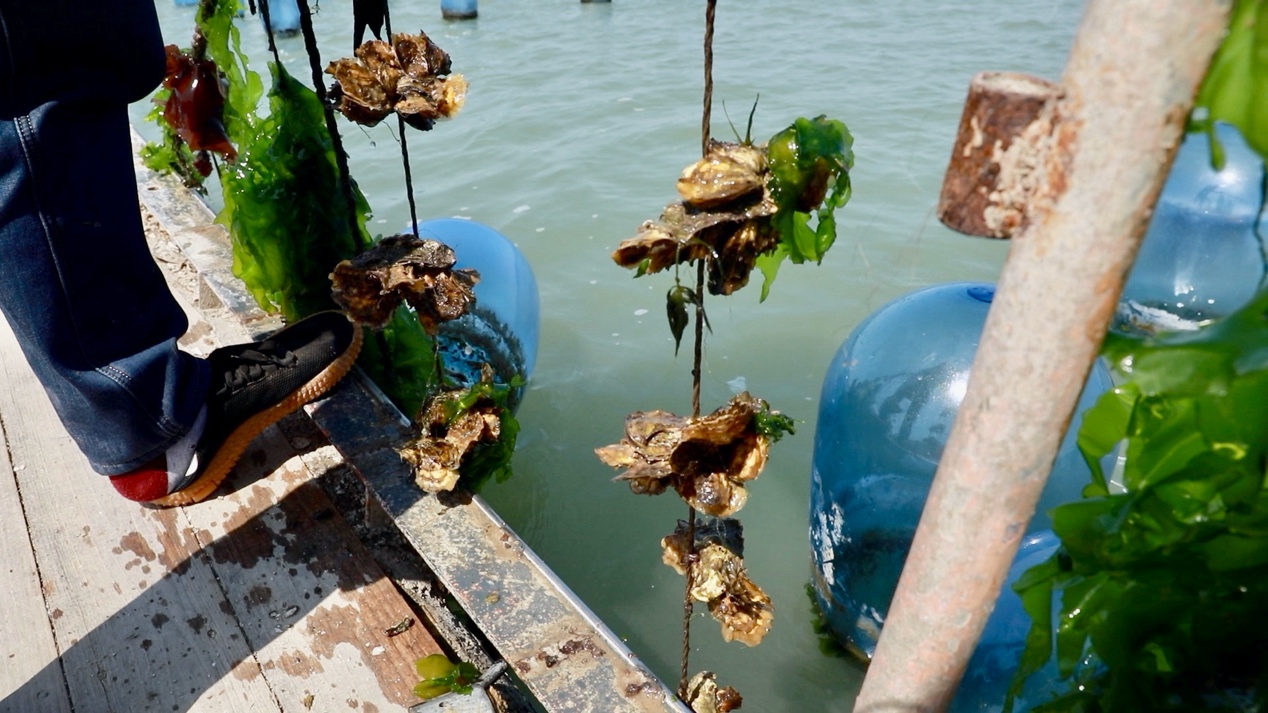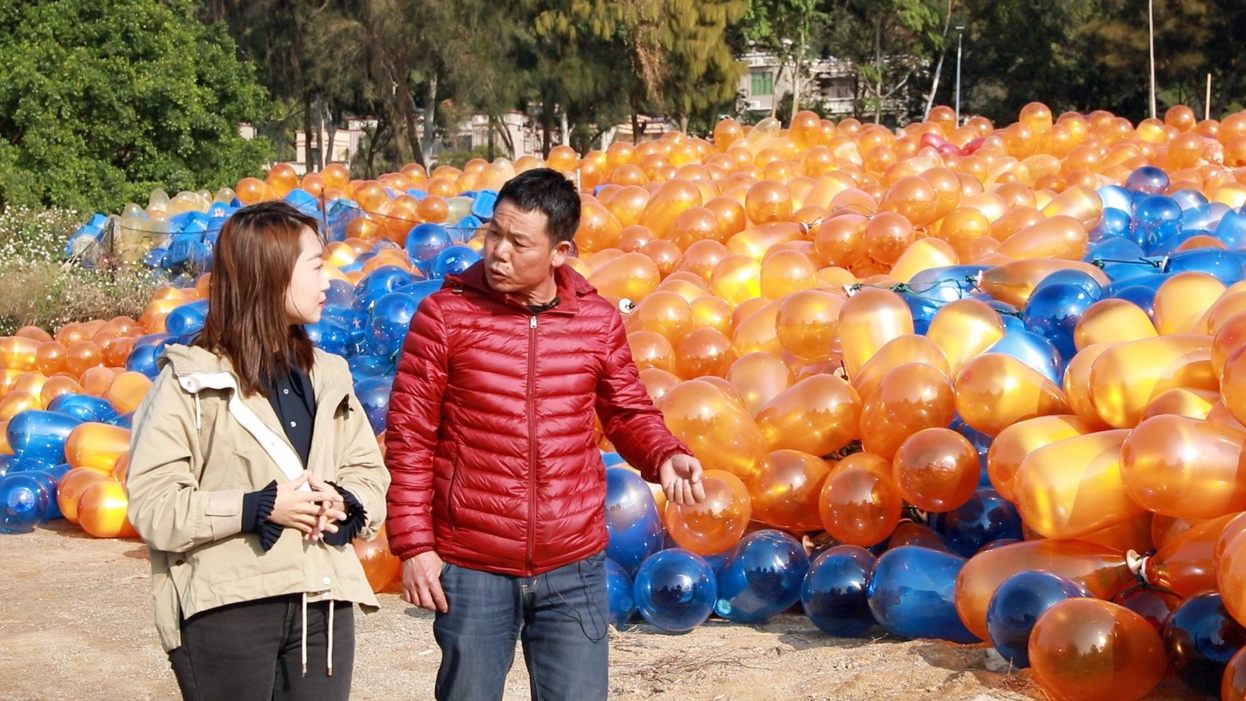
Local people take care of oysters raised in Nan'ao County, south China's Guangdong Province, May 7, 2021. /Shantou Plus from Shantou Special Economic Zone Newspaper
Local people take care of oysters raised in Nan'ao County, south China's Guangdong Province, May 7, 2021. /Shantou Plus from Shantou Special Economic Zone Newspaper
China's seafood industry is going green. On south China's island of Nan'ao, farms in the ocean are showing off their colors while giving lessons in sustainability.
Nan'ao County is an island off the city of Shantou in Guangdong Province. From above, the surface of the ocean is dotted with lines of colorful balloons. It's home to a seafood farm, a major industry that provides a livelihood for local fishermen and women.
But look a little more closely and the balloons are actually plastic balls floating on the surface. Strings with oyster larvae are tied to them and grow beneath the water.
From September to October, farmers will attach oyster larvae to the strings of floating balls like these. The young oysters, known as spat, will grow until the following summer when they are big enough to be harvested. As the oysters grow bigger and heavier, more balls are needed to avoid them sinking.

Local fisherman Cheng Chengxiao shows the oysters growing on strings attached to the floating balls in Nan'ao County, Guangdong Province, March 26, 2021. /CGTN
Local fisherman Cheng Chengxiao shows the oysters growing on strings attached to the floating balls in Nan'ao County, Guangdong Province, March 26, 2021. /CGTN
Cheng Chengxiao, a local fisherman, has been raising oysters for years.
"We insert two bamboo sticks deep into the mud to fix the strings. Then we use thicker strings to connect them all. So, the format looks orderly and quite stable. And the seawater at one to two meters from the surface contains the most nutrition. So we have to control the string around this depth," he told CGTN.
The colorful plastic balls are biodegradable. Most importantly, they are more environmentally friendly than traditional options. In the past, local fishermen used white balls made of plastic foam, which was damaging to the ocean.
Last year however, local authorities banned their use and encouraged fishermen to replace them with new ones.
Many initially resisted the idea. "We were unwilling to use the new balls at first. But after using them for some time, we feel they're great," Cheng recalled.

Local fisherman Cheng Chengxiao also bought a production line to make the eco-friendly floating balls himself in Nan'ao County, Guangdong Province, March 25, 2021. /CGTN
Local fisherman Cheng Chengxiao also bought a production line to make the eco-friendly floating balls himself in Nan'ao County, Guangdong Province, March 25, 2021. /CGTN
Local authorities are subsidizing the eco-friendly balls. Many fishermen say using them has both reduced costs and increased the efficiency of harvests.
"The old balls are about 14 yuan ($2.1) each. The new ones are only 10 yuan. The old ball needs us to tie two strings while the new one only needs one string. And recycling the new ones is also much easier. So, working efficiency has certainly risen," Cheng said.
Nan'ao has mainly fish, shellfish and algae cultures. Currently, there are more than 26 square kilometers of seafood farms, with an annual production of around 130,000 tonnes.
The county has now finished replacing all the old balls. The move is not only better for the marine environment. It's also creating a site that's increasingly attractive to visitors.

